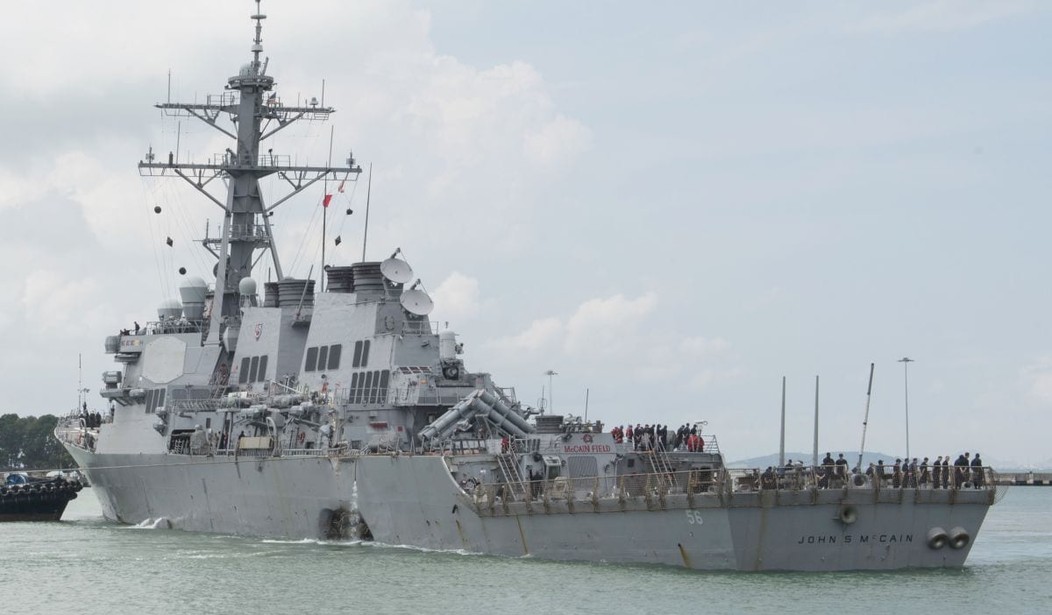The chief cyber intelligence officer at a Navy lab is suggesting that the spate of collisions between Navy vessels and civilian ships may be the result of a cyber attack.
The Pentagon won’t yet say how the USS John S. McCain was rammed by an oil tanker near Singapore, but red flags are flying as the Navy’s decades-old reliance on electronic guidance systems increasing looks like another target of cyberattack.
The incident – the fourth involving a Seventh Fleet warship this year – occurred near the Strait of Malacca, a crowded 1.7-mile-wide waterway that connects the Indian Ocean and the South China Sea and accounts for roughly 25 percent of global shipping.
“When you are going through the Strait of Malacca, you can’t tell me that a Navy destroyer doesn’t have a full navigation team going with full lookouts on every wing and extra people on radar,” said Jeff Stutzman, chief intelligence officer at Wapack Labs, a New Boston, New Hampshire, cyber intelligence service.
“There’s something more than just human error going on because there would have been a lot of humans to be checks and balances,” said Stutzman, a former information warfare specialist in the Navy.
It’s not the first time the Navy has suffered such an accident.
On Jan. 31, a guided missile cruiser, the USS Antietam, ran aground off the coast of Japan. On May 9, another cruiser, USS Lake Champlain, was struck by a South Korean fishing vessel.
In the wee hours of June 17, a destroyer, the USS Fitzgerald, a $1.5 billion vessel bristling with electronics, collided with a container ship, resulting in the deaths of seven sailors. The commanding officer and two other officers were formally removed from duties.
“I don’t have proof, but you have to wonder if there were electronic issues,” Stutzman said.
Todd E. Humphreys, a professor at the University of Texas and expert in satellite navigation systems, echoed a similar concern: “Statistically, it looks very suspicious, doesn’t it?”
These irregularities are affecting the shipping industry too.
In a little noticed June 22 incident, someone manipulated GPS signals in the eastern part of the Black Sea, leaving some 20 ships with little situational awareness. Shipboard navigation equipment, which appeared to be working properly, reported the location of the vessels 20 miles inland, near an airport.
That was the first known instance of GPS “spoofing,” or misdirection.
Much more serious than jamming, spoofing interferes with location even as computer screens offer normal readouts. Everything looks normal – but it isn’t.
Even the possibility of a hack has to chill the blood of Navy brass. The implications are absolutely staggering. Imagine several Naval vessels on patrol losing the ability to determine where they are or, more importantly, where the other ships are located.
Such a scenario would cripple the powerful Seventh Fleet.
If the Navy determines there was a cyber attack, I doubt whether we’ll hear about it. Making our enemies aware of our vulnerabilities might encourage them to attack. But that makes it even more imperative that we find out what happened to the McCain and Fitzgerald.










Join the conversation as a VIP Member